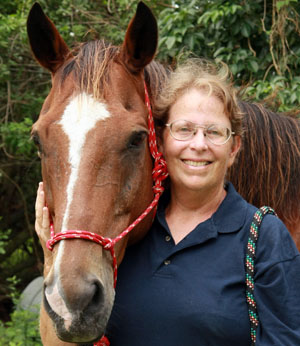TAILS FROM THE TRAILS
If you listen late at night or right around sunrise, you might hear them. More yipping than howling, and usually more than one. No, you’re not in the middle of the desert or on the set of a western. We have coyotes right here in Palm Beach County.
According to the Florida Fish & Wildlife Conservation Commission (FWC), coyotes are members of the dog family, similar in appearance to a medium shepherd. They weigh between 20 and 30 pounds, have pointed ears, a narrow muzzle and bushy tails. Their scientific name, canis latrans, literally means barking dog. Coyotes exhibit a variety of vocalizations. Howling is often a group effort, perhaps beginning as a simple howl, but quickly increasing in intensity to a series of group howls and high-pitched barks.
It seems that coyote numbers have stabilized in North Florida and Central Florida, but their numbers may continue to increase somewhat in South Florida because coyotes reached this area more recently. A 1981 survey reported them in 18 counties. By 1988, they were in 48, and a 2007 FWC report documented them in all 67 Florida counties. Like it or not, coyotes are probably here to stay.
Coyotes can breed with domestic dogs and produce fertile offspring. Coyotes den in hollow logs, brush piles and burrows. They will dig their own dens, but more commonly enlarge burrows made by other animals such as armadillos or gopher tortoises. Coyotes are most active at sunset and sunrise. They eat rats, mice, rabbits, wild fruits, insects, birds and virtually any type of carrion. They prey on sheep, goats, calves, hogs and poultry. They’ll also kill domestic dogs and house cats and may carry off small animals, such as chickens or newborn goats, leaving only tracks. They’ve been known to attack cows in labor, feeding on both the emerging calf and the mother.
Coyotes are not a threat to human safety and are normally timid toward people. Most coyote attacks on pets occur either at night or in the early evening and early morning hours. During those times especially, be careful if walking your pet in wooded or overgrown areas, which could hide coyotes. Keep your dog on a short leash and cats indoors. When cats roam freely, there’s an increased risk of attack.
Be cautious of picking up your pet if you see a coyote. Picking up a pet may stop a coyote attack, but it can also lead to a situation in which an aggressive coyote continues to go after that pet while in your arms. Coyotes can carry rabies.
If a coyote approaches, immediately use a noisemaker or shout and wave your arms. A solid walking stick or golf club is a powerful deterrent at close range. Throwing stones, a strong spray from a water hose, or pepper spray can work, as can an air horn or a “coyote shaker.” You can make a coyote shaker by placing a few washers, pebbles, or pennies in an empty soda can.
“You don’t normally see a lot of coyotes around. They’re reclusive,” FWC Officer Jorge Pino explained. “If you do see one, use common sense. Most likely, the coyote will be more afraid of you than you are of it.”
“I’ve heard more coyotes recently than I used to,” said Susan the Saddle Diva, who lives across the street from the J.W. Corbett Wildlife Management Area. “Be aware if cats and bunnies start disappearing. That’s what they go for. We’ve lived here 10 years. In all of that time, we heard them howl at night maybe three times. Last year alone, we heard them three times. Now I’ve heard them twice in the last two months. I hear they’re a big problem up in Jupiter Farms.”
Indeed, people have been spotting coyotes recently in Jupiter Farms, Loxahatchee Groves and The Acreage, especially along the State Road 7 reliever road. They’ve attacked fenced dogs in Abacoa and Loxahatchee. They killed two goats in Fox Trail.
Greg Blakeley is a nuisance wildlife trapper, among other trades. (He also removes bee hives.) Recently, he’s been called upon to trap and relocate coyotes.
“There are a lot of them in Jupiter,” he said, adding that Loxahatchee Groves and The Acreage are also prime areas. “They recently ate an emu on a property on A Road. There are more of them in the Glades and Okeechobee County, where it’s more rural.”
Greg agreed that they are most are active between midnight and 5 a.m. “They’ll eat poultry, but they’ll go after anything they can catch. I’d say they might go after a miniature horse. They’ll keep coming back to a food source. They’ll hop fences or dig under,” he said. “I catch them humanely and relocate them where the FWC tells me, to keep ecosystems balanced. I take them at least 30 miles, sometimes as far as Yeehaw Junction.”
The problem has also been addressed by Palm Beach County Animal Care & Control.
“I’ve seen them. They’re out there,” Capt. Dave Walesky said. “We’ve had them in our facility for 15 years, especially when they’re burning the cane in the Glades. You can definitely hear them howl at night. They’re more timid than aggressive. They’re opportunistic hunters and seek out food sources, which could be any smaller animals such as fowl, cats, rabbits or tiny dogs. They jump or climb fences, squeeze through narrow openings, even pull apart rotted or rusty sections. They hate loud noises, so they’re relatively easy to scare off.”
Walesky said that people can discourage coyotes by maintaining strong fences and minimizing food sources. “One of the best protections — get a donkey,” he said. “Donkeys hate coyotes. They’ll smell them out, get that look in their eyes, and run them off. Donkeys are the best protection against coyotes.”
For more information, contact the FWC at www.myfwc.org, call Animal Care & Control at (561) 233-1200, or seek out Greg the Trapper at (561) 255-0316.








